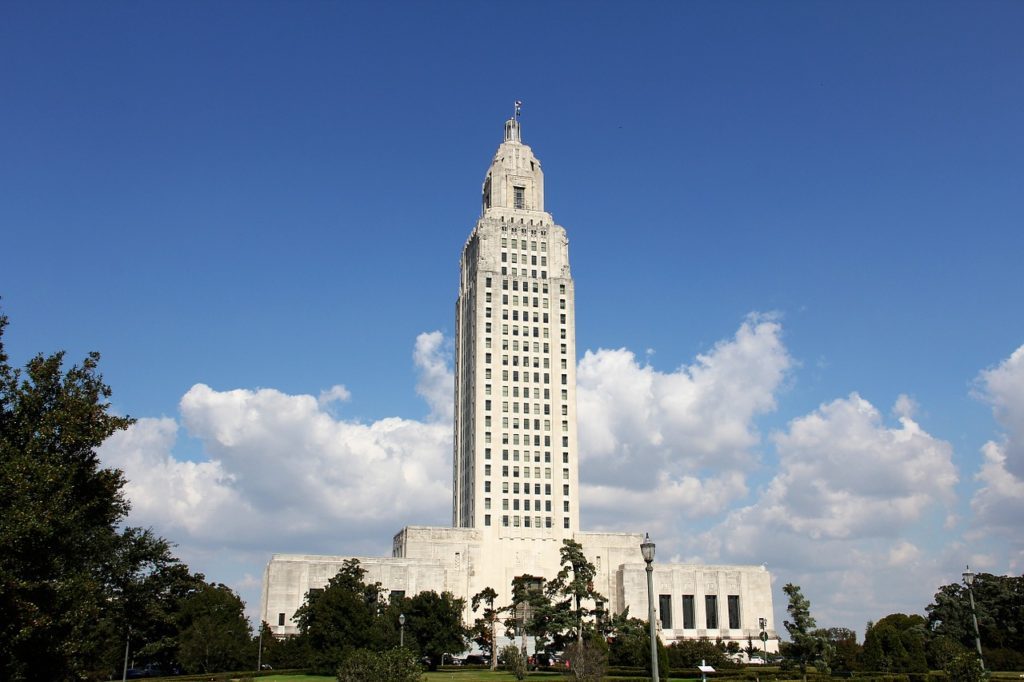
Helping Louisiana’s Capital Reach New Audiences
When was the last time you booked a trip? Was it with your family? A group of close friends, or your significant other? Do you have young children to consider when you plan a vacation? What ultimately drives you to your destination?

It’s Karron Alford’s job to consider all of these questions. As the Director of Marketing & Technology for Visit Baton Rouge, Louisiana’s capital city, tourism and marketing arm, Alford is constantly examining how and why potential visitors are making decisions.
Over the past decade, Alford has witnessed the changes within the tourism industry and how generations of travelers, from baby boomers, to generation Z, have evolved. She’s had her share of highs and lows including seeing Baton Rouge through the 2016 floods that overwhelmed the capital city and surrounding areas last year. Alford says the tourism and marketing landscape has continuously changed since she began her career with the company. We talked with Alford to learn more about her experience in an industry where she says, change is inevitable, and adaptability is a necessity.
Can you share with me how you got started in your career?
I started with Visit Baton Rouge in 2007. I started out as an intern, and then a part-time employee. About a year later, I moved into a sales manager position, and did that for about two and a half years, and then moved into a content manager role, which was a newly created position. I did that for a few years, and then I left the company for a brief time, and ended up coming back as the director of information technology. In 2015, I moved into the role of director of marketing & technology. We saw the close connection between marketing & technology and the advances that we needed to make to be relevant in the industry.
Can you tell me about the role that you serve in now?
I oversee the marketing, communication, and the technology department. We have a total of 4 people in that area. I focus on the strategy of all three of those areas and the support staff manages the day-to-day operations.
In the past, the tourism industry was a very set industry, and there wasn’t a whole lot of change happening. After 2008, we saw that we really needed to shift that. We had to adapt to the audience that was traveling. It was such a stable audience for so long. We knew their exact travel patterns – those were the baby boomers.
Today, that has changed. We are now looking to marketing four different generations (baby boomers, generation X, millennials, and generation Z). And the messaging and platform for marketing has changed. But the budget hasn’t.It’s a constant learning curve and research curve trying to figure out the best way to deliver that. I spend a lot of time reading research and trying to see how people make those decisions.
We are constantly moving our allocations around and our thought process to make sure that we are relevant. Every day is so different and involved in making sure we are hitting the right audience.
When did you begin to see the shift occur in the industry?
2008 was the start of the economic downturn. We were so comfortable with keeping the same pattern. We were looking for new and creative ways to reach audiences that we didn’t consider before. It was also the time when millennials were starting to enter college or looking for jobs, and they were interested in travel. What we found was that our traditional ways of reaching audiences were not working. So it really made us rethink our strategy. That was a big turning point in the tourism industry.
What were the old ways of reaching people?
Decisions were made without looking at data. It was an internal decision of who we thought it was without stacking the data. And social media was not a part of it. It was TV, print, and billboards.
What new ways emerged to reach your audience?
When we first started, digital was so inexpensive, it was blowing our minds. From a tourism perspective, we are just starting to talk about generation Z. It’s been a focus of mine for 2 years. Generation Z has a voice now. When a family is looking for a vacation, they are having a discussion now. They’re asking questions.
That’s been a challenge. They (generation Z) are so different from the millennial generation. Social media is not as huge for them. Video is huge for them. How are we reaching them? When they are sitting down with their family to have that discussion, they’ve seen a commercial on YouTube, and they said, we need to go there!
How do you reach four different audiences simultaneously?
A lot of how we allocate that budget is based on research and data. Morgan & Co has been our source for finding that data. They’ve done an excellent job of finding who that visitor is going to be and helping us tell our story.
It’s very challenging because the tourism industry was so adverse to change, and now change is happening so fast, and we have to get the internal staff to see what those changes are and why we’re making those decisions so quickly.
I am really happy to say that diversifying our media plan has been the biggest change that we’ve made. And Morgan & Co has done a great job. That has been our biggest project of really understanding who is coming, and the best way to reach them. It’s completely changing the mindset of what we were doing two years ago.
When we began working with Morgan & Co, we were 70% traditional and 30% digital, and they came in with a great study of who was visiting Baton Rouge. The first year, we started working with them, we swapped that. We had a much younger audience. We went 70% digital, and 30% traditional. That was a huge change for us.
What did you find as a result of that change?
It was so successful that in 2017, we revised our media plan again and went 80% digital and 20% traditional.
How do you measure that success?
We were able to follow their entire travel journey. We could see the visitation numbers increasing. We really try to understand who our visitors are. In 2014, we had 3.489 million visitors, in 2016, we had 4.375 million. And that had happened as a result of the floods last year. We’ve really had to rethink our entire strategy and also reevaluate the messaging that we put out there.
How did that messaging change?
The city had been redefined. It really put a different message out. We wanted to be honest with ourselves. We didn’t want to sell a city that we are not.
In your eyes, what is the city to you?
Baton Rougeians have a lot of loyalty to this city. The focus and the stories have become about the people. The generosity and the hospitality of the people. We are rediscovering and redefining who we are. You get in that comfortable situation, without really taking time to see who you are. It’s been difficult in a good way. Because it’s really made us put the focus on the messaging. It changed our story.
What has been the most difficult challenge for you?
Trying to constantly keep up with the changes, and not just making a change because it’s the latest and greatest thing, but because it has meat behind it.
One of the big challenges that I have not mentioned is that we have not done a great job of telling our local community about who we are, and what we do, and why we’re important to them. We’ve always been focused on bringing visitors to Baton Rouge. We are in the early stages of implementing a community outreach campaign. It’s going to be more digital. We’re looking at a lot of social media. Baton Rouge has a diverse age range of locals, and we’re seeing a lot of locals staying.
What has your experience been like working with Morgan & Co?
We’ve worked with a number of different agencies, but I have to say that Morgan & Co has been refreshing. They are always open to ideas and suggestions, and really critical in helping us figure out those new directions that we need to take, while considering our concerns and needs as well.
